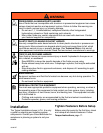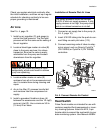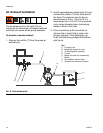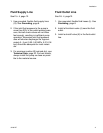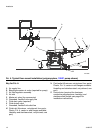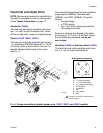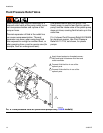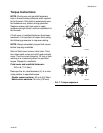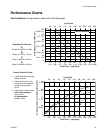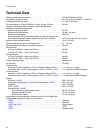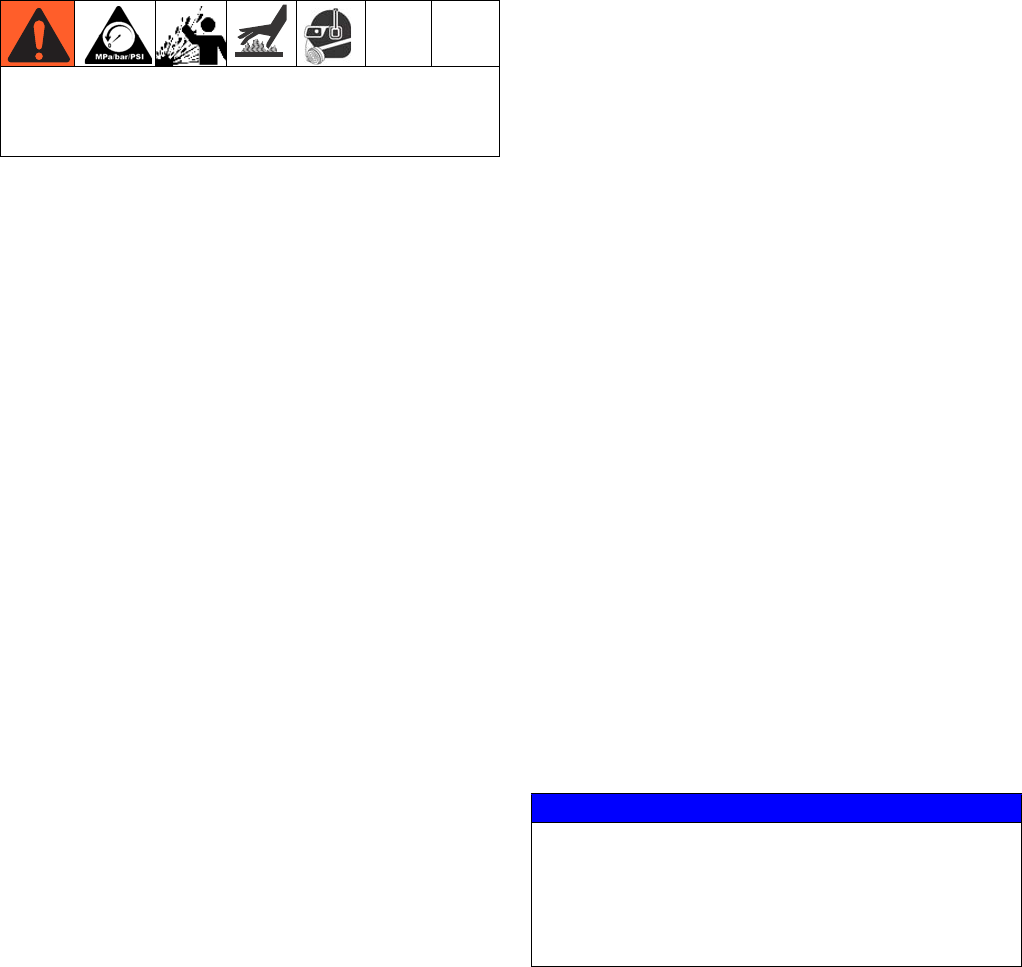
Operation
312877P 15
Operation
Pressure Relief Procedure
1. Shut off the air supply to the pump.
2. Open the dispensing valve, if used.
3. Open the fluid drain valve to relieve fluid
pressure. Have a container ready to catch
the drainage.
Flush the Pump Before First Use
The pump was tested in water. If water could
contaminate the fluid you are pumping, flush
the pump thoroughly with a compatible solvent.
See Flushing and Storage, page 16.
Tighten Fasteners Before Setup
Before using the pump for the first time, check
and retorque all external fasteners. Follow
Torque Instructions, page 17. After the first
day of operation, retorque the fasteners.
Starting and Adjusting the Pump
1. Be sure the pump is properly grounded.
Refer to Grounding on page 8.
2. Check fittings to be sure they are tight. Use
a compatible liquid thread sealant on male
threads. Tighten fluid inlet and outlet fittings
securely.
3. Place the suction tube (if used) in fluid to
be pumped.
NOTE: If fluid inlet pressure to the pump is
more than 25% of outlet working pressure, the
ball check valves will not close fast enough,
resulting in inefficient pump operation.
4. Place the end of the fluid hose into an
appropriate container.
5. Close the fluid drain valve.
6. Back out the air regulator knob, and open
all bleed-type master air valves.
7. If the fluid hose has a dispensing device,
hold it open.
8. Pumps with runaway protection: Enable the
prime/flush function by pushing the
prime/flush button on the DataTrak.
9. Slowly increase air pressure with the air
regulator just until the pump starts to cycle.
Allow the pump to cycle slowly until all air is
pushed out of the lines and the pump is
primed.
NOTE: Use lowest possible air pressure to
prime, just enough to cycle the pump. If the
pump does not prime as expected, turn air
pressure DOWN.
Trapped air can cause the pump to cycle
unexpectedly, which could result in serious
injury from splashing.
NOTICE
When replacing Husky 1040s: The Husky
1050 operates more efficiently than did the
1040. Reduce air inlet pressure by approxi-
mately 20 percent to maintain an equivalent
fluid output.



